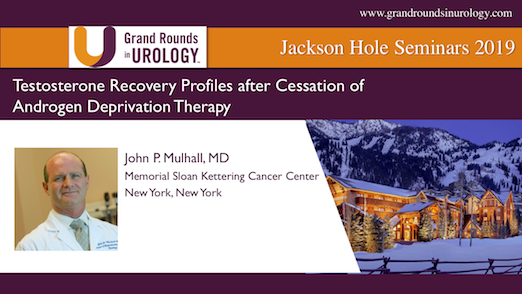Contemporary Management of Recurrent Idiopathic Priapism
John P. Mulhall, MD, Director of the Male Sexual and Reproductive Medicine Program at Memorial Sloan Kettering Cancer Center in New York City, defines recurrent idiopathic priapism (RIP) (repeated priapism events without an overt cause) and explains that management follows all the tenets of ischemic priapism treatment. He explains the focus of treatment should be to give a patient tools to avoid an emergency room (ER) visit. Dr. Mulhall advises clinicians to begin treatment for persistently rigid pharmacologically-induced erections no later than four hours after the onset of symptoms and to counsel all patients with persistent ischemic priapism that there is the chance of erectile dysfunction. Further, Dr. Mulhall advises clinicians to counsel patients with a priapism event >36 hours that the likelihood of erectile function recovery is low. He states that clinicians should manage acute ischemic priapism with intracavernosal phenylephrine and corporal aspiration, with or without irrigation, as the first line of therapy and prior to operative interventions. Dr. Mulhall then displays a graphic showing that pathway dysregulation of the enzyme PDE5 may result in, or contribute to, RIP; he concludes that this is not a complete explanation of the condition. Next, Dr. Mulhall outlines emergency maneuvers that he advises practitioners to train their patients to undergo, using in-home intracavernosal phenylephrine for erections lasting more than one to two hours and visiting a clinic or ER if the at-home treatment is unsuccessful. He highlights the importance of educating patients regarding hypertension/reflex bradycardia when using intracavernosal phenylephrine. Next, he explains that mitigation strategies revolve around the use of PDE5i, ketoconazole/prednisone, anti-androgens, and LHRH agonists. He then cites a 2005 publication stating that phosphodiesterase-5A dysregulation in penile erectile tissue is a mechanism of priapism, pointing out that this is different from sickle-cell disease, and qualifying once again that this does not explain the condition completely. Dr. Mulhall then cites a case report on long-term oral phosphodiesterase-5 inhibitor therapy and its alleviation of recurrent priapism, pointing out that with just a few patients involved, the report, while thought-provoking, is not definitive. He reviews an article that lists various treatments and addresses their degrees of efficacy, highlighting one—ketoconazole with prednisone—that he calls his “go-to strategy.” Dr. Mulhall cites a study of 114 men diagnosed with RIP whereby 42 were initiated on PDE5i therapy and 24 were evaluable; of them, 22 reported improvement in priapism, but Dr. Mulhall explains the limitations of this particular trial and asserts more studies are needed. He explains a related concept, sleep-related painful erections (SRPE), explaining that some treatments for RIP are used with SRPE and he posits that these patients may be on the lower end of the RIP spectrum. He then summarizes his talk, highlighting key points: there is an unclear mechanism of action in RIP; practitioners should treat these episodes like ischemic priapism; patients should receive training in at-home phenylephrine injection (including a discussion of its risks); and mitigation strategies include the use of ketoconazole/prednisone treatment.
Read More


